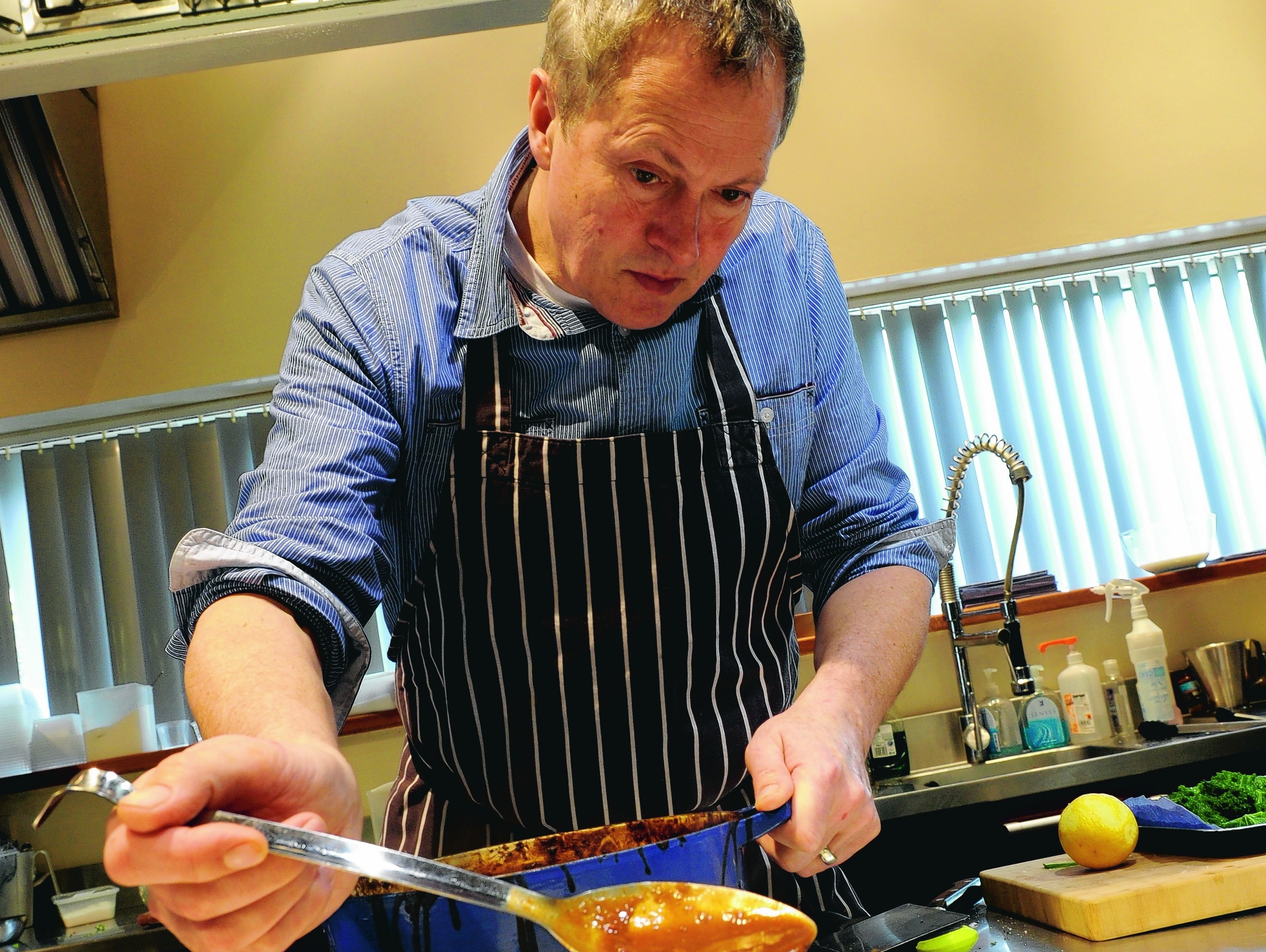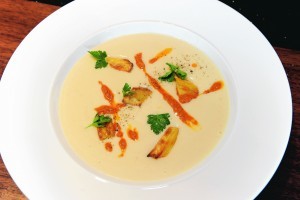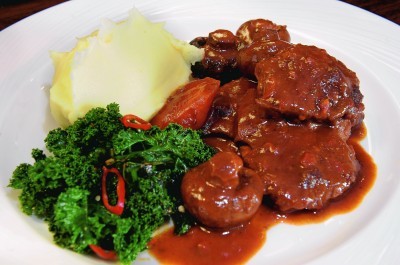Michelin-starred chef Nick Nairn celebrates the end of winter with two seasonal and flavoursome dishes
Parsnips are at their best during the winter months but an awful lot of people only eat them during the festive season which is a shame because parsnips are fantastic, good value vegetables and very versatile. Roasting them gives them a sweeter flavour with a nice touch of caramelisation, while you can eat them raw in a salad or make a fantastic parsnip puree. It’s not a humble root veg and has an amazing intensity, almost exotic, flavour to it.
The soup recipe here shows parsnips at their best. It’s made with harissa, which is a north African spice which gives the soup a brilliant smoky chilli kick. Remember to keep back a few chunks of roasted parsnips to dot on top of the soup before serving to give it that restaurant quality look and taste.
The second dish is a classic, very rich winter casserole using featherblade which is a fabulous cut of beef with a big seam of fat running down the middle of it which, once cooked for a couple of hours, dissolves and keeps the meat moist and gives it lots of flavour. Another reason we use featherblade is because you can cut it into nice steak-sized pieces. Buy it from your local butcher as you’re unlikely to find it in supermarkets. Top tip for this dish is to keep the veg big and chunky and don’t be tempted to chop the mushrooms as they’ll shrink by about half.
HONEY ROAST PARSNIP SOUP WITH HARISSA
- SERVES 4
- 500g parsnips
- 2 tbsp runny honey
- 4 tbsp olive oil
- 2 medium onions, chopped
- 20g butter
- 1 litre stock (chicken or veg stock cubes are fine)
- 2 tbsp Harissa (we like Belazu Rose Harissa)
- 30ml double cream
- Maldon salt and freshly ground black pepper
- 10g parsley leaves
Heat the oven to 180C. Peel the parsnips and chop off the ends. Cut into long quarters and remove the woodiest part of the core. Chop the rest into roughly-cut 3cm chunks. Spread on a baking sheet and drizzle over about 2 tbsp olive oil. Pop in the hot oven for 20 mins.
Meanwhile, heat a saucepan on a medium hob, add the rest of the olive oil. When hot add the chopped onion. Stir to coat and begin cooking. Add the butter and cook until soft but not coloured. Set aside.
Remove the parsnips from the oven, shoogle them around and drizzle over the honey. Pop them back in the oven for five mins. Then remove. Pick out about 12 nice-looking pieces to use as ‘croutons’ on the finished bowls of soup.
Add the rest of the parsnip to the softened onions on a medium hob, add the stock and cook for 10 mins. Stir in the cream, and blitz the soup with a hand-held blender. Season to taste.
Serve in warm bowls. Garnish with a spoonful of harissa per bowl (stir in a little oil to loosen the harissa if it’s too thick), a few parsnip croutons, a parsley leaf or two and a grind of black pepper.
BEEF AND MUSHROOM CASSEROLE WITH PARSNIP MASH AND CHILLI KALE
- SERVES 6-8
- I make this in a giant pot to feed a hungry gang of at least six. I recommend keeping the meat in big, steak-like pieces, and all the veg should be really chunky and the mushrooms left whole.
- 1kg joint of featherblade beef
- Olive oil
- 250g whole chestnut mushrooms
- 300ml water and 3 Oxo cubes (or use good quality beef jus – Oxo gives the rich colour I’m after in this recipe)
- 4 onions, chunkily chopped
- 4 sticks celery, chunkily chopped
- 3 carrots, chunkily chopped
- 400ml tin chopped tomatoes
- 1/2 a bottle red wine
- 200g flour
- 1tsp paprika
- For the mash:
- 500g Rooster potatoes
- 300g parsnips
- Butter
- Sea salt and black pepper
- For the kale:
- 400g kale
- 2 red chillies
- 1tbsp olive oil
Place the flour in a shallow dish. Stir in plenty of salt and pepper plus the paprika. Slice the meat into 6-8 steaks about 2 cm thick. Dip each steak into the seasoned flour, to coat both sides.
Heat a large casserole dish on the hob plus a large frying pan. Add about 2 tbsp olive oil to each. When hot add the slices of beef to brown on both sides. Cook for long enough that the flour flavour cooks out. Remove to a warm place to rest.
Add the onions to the beefy oil to soften a little, add the celery and carrot, and finally the mushrooms. Tip the beef back into the casserole, and stir well. Now add the tomatoes and red wine and stir well. Allow the alcohol to boil off. Stir again and crumble in the Oxo cubes. Add the water or jus, so that the ingredients are just covered. You don’t want it too liquid.
Now place in the oven for 2 hours at 160C. Check half way through that there is enough liquid.
For the mash, peel, chop and simmer the potatoes in salted water until tender. Do the same with the parsnips. Drain both and mix together, letting them dry out a little before mashing with the butter. Finally, season and beat them until smooth. Steam the kale for about 5 mins. Lightly fry the sliced red chilli in olive oil. Season the kale and add the chilli. Finally, check the seasoning of the casserole, and serve with the mash and kale.


